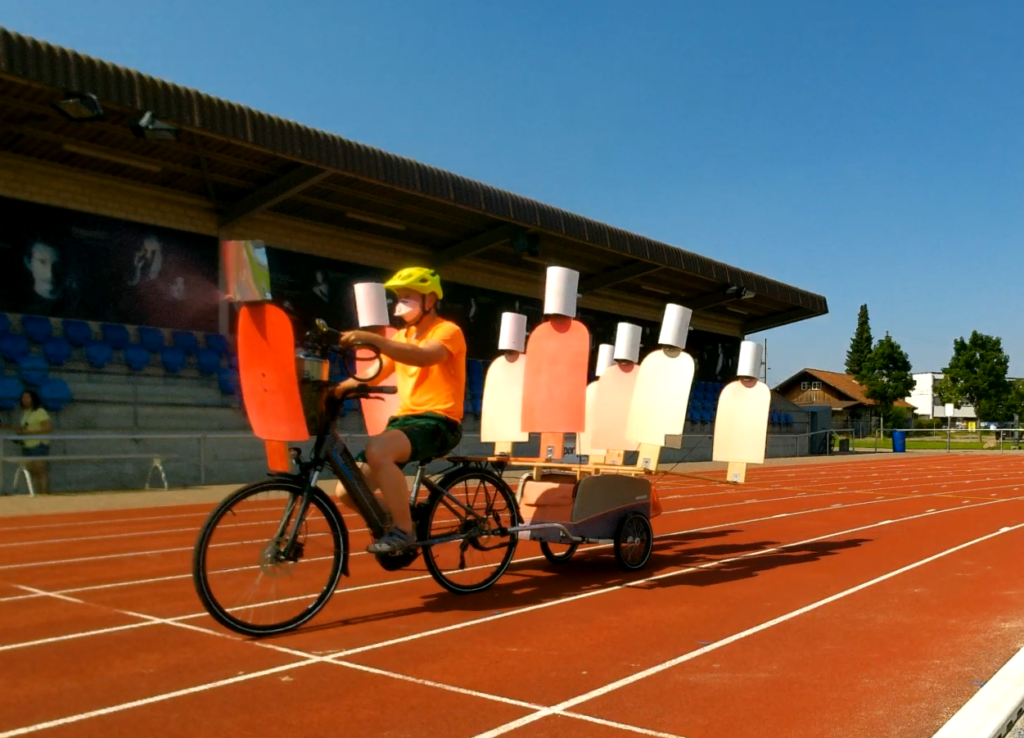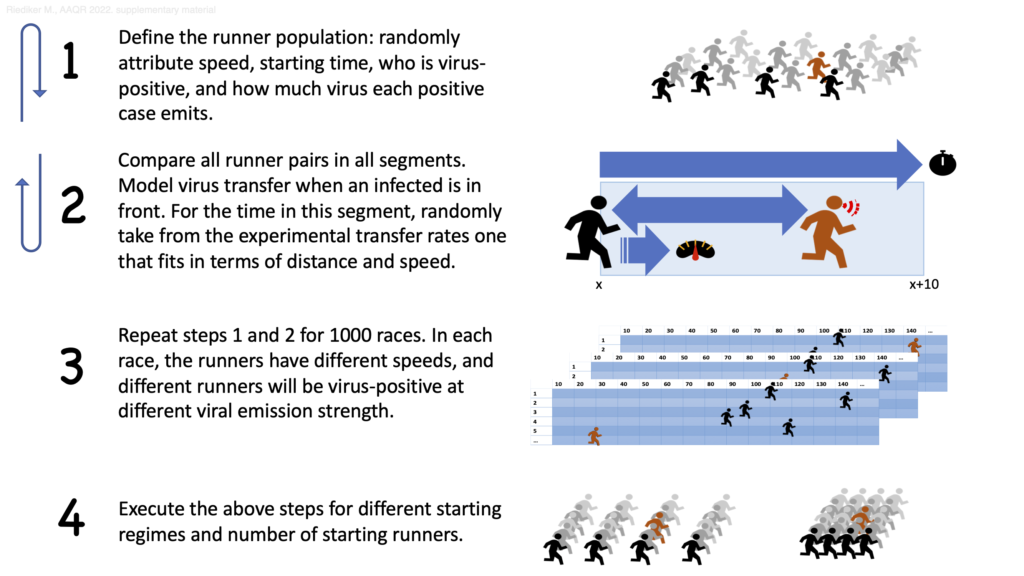We all know that indoors there is a high risk of transmission, as respiratory fog-like aerosols accumulate mainly in small and poorly ventilated spaces. But what is the situation outdoors? Do these fog-like aerosols play a role? And what is the contribution of larger spray-like respiratory aerosols? I explored this question in a study in which I simulated a run with a group of dummies. I used a fog machine and a professional pesticide sprayer filled with color and checked the transmission rates. I then used the computer to simulate various race formats. The bottom line in a nutshell: Fog is generally too dilute to transfer enough aerosols. However, if you are hit by even one large spray aerosol, the risk increases rapidly. Fortunately, the likelihood of being hit by a large droplet is low as long as you avoid chasing other runners for extended periods of time. Overall, the risk of getting infected during an outdoor run is low. Organizers can further reduce the risk by setting up many small starting blocks, starting individually every few seconds, or a combination of both; and by setting rules that runners cannot run close behind each other.
The following are the highlights and the abstract from the publication describing the study. It was published under the terms of the Creative Commons Attribution License (CC BY 4.0), which permits unrestricted use, distribution, and reproduction in any medium, provided the original author and source are cited.
Cite this article: Riediker, M. (2022). Low Transmission of Coronavirus via Aerosols during Outdoor Running Races and Athletic Events. Aerosol Air Qual. Res. https://doi.org/10.4209/aaqr.220069
HIGHLIGHTS
- Corona-virus transmission between outdoor runners was studied.
- Experiments suggest low transmission of large (spray) and small (fog) aerosols.
- Higher speed increased spray transfer and reduced fog transfer.
- Simulations of races showed low risk, except when trailing over many kilometers.
- Starting in small blocks and individually every few seconds reduced the risk.


ABSTRACT
Introduction: Outdoor contacts were reported to rarely result in transmission of the severe acute respiratory syndrome coronavirus 2 (SARS-CoV-2). Little is known, however, about the risk during popular outdoor running events. This study assessed the transfer of aerosols from infected runners to other race participants.
Methods: In the experimental part of the study, a group of dummies was pulled at different speeds over an athletics track and field circuit. Fine aerosols were produced with a fog machine, large aerosols with a pesticide sprayer releasing food colorant, with the size matching the two size modes of human expiratory aerosols. The experimentally determined transfer rates fed a Monte Carlo simulation of different race distances, starting sequences and block sizes. Runners were modeled using start and end times of SwissCityMarathon – Lucerne participants and a previously published distribution of virus emission strengths. The race distance was divided into 10-meter segments in which the transfer from the sources to collocated runners was calculated.
Results: The experiments showed that fog and spray transfer decreased with increasing distance from the source. Increased speed was associated with decreased fog but increased spray transfer. The simulations suggest that more runners received small amounts of virus by fog-transfer. However, critical virus-transfers defined as more than 100 virus copies happened mostly by spray. The estimated rate of people getting a potentially infectious dose was in most races well below the simulated prevalence rate of virus-emitting runners, mostly about five-fold smaller. Changing from block starts to individual starts further reduced the estimated transfer. Only an artificial group running 30 km in close distance at high speed brought the rate above parity.
Discussion: These findings suggest that outdoor running events are associated with a low risk for virus infection as long as runners are not trailing each other over very long distances.
